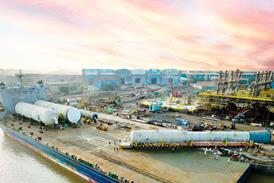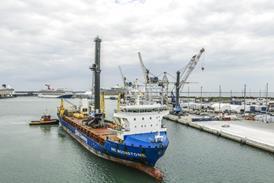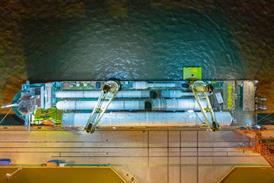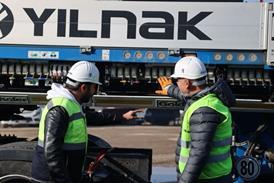DNV has issued its 8th edition of the Maritime Forecast to 2050 report. It says that the maritime industry needs to prioritise energy efficiency until the cost and supply of carbon-neutral fuels become more feasible. Longer term, customers need to prepare for a sharp increase in logistics costs.
The IMO targets are clear: full-scale decarbonisation by or around 2050, a 20 percent emissions reduction by 2030, and a 70 percent reduction by 2040. Achieving these goals is undeniably complex, and the net around the shipping industry gets ever tighter with regulations like the EU ETS and FuelEU Maritime now putting a cost on emissions.
However, carbon-neutral fuels are expensive and in short supply. Therefore, technological developments focused on energy efficiency, supported by digitalisation, must be prioritised to achieve short-term emissions reductions and lay the foundations for future success, according to DNV. There is a long way to go as 93 percent of the world’s shipping fleet is still running on fossil fuels. Energy efficiency measures will be crucial in achieving fuel and emissions reductions until carbon-neutral fuels become more readily available.
Optimising the current fleet and achieving every efficiency gain possible has been the first point of call for most owners and operators of multipurpose tonnage. Put simply, the economics of newbuilds don’t appear to stack up, as evidenced by the ageing nature of the fleet (now 17 years on average) and a slim orderbook.
DNV’s latest Maritime Forecast to 2050 estimates that fuel consumption can be reduced by between 4-16 percent by 2030 using operational and technical energy efficiency measures. Achieving 16 percent would save 40 million tonnes of fuel and 120 million tonnes of CO2 emissions - equivalent to operating the 55,000 smallest ships or the 2,500 largest ships with carbon-neutral fuel.
Depending on energy efficiency gains, shipping’s demand for carbon-neutral fuels in 2030 is estimated to be between 9-55 million tonnes, according to DNV. However, production of carbon-neutral fuels for all sectors, not just shipping, is expected to be between 44-62 million tonnes by 2030, it will be near impossible for shipping to secure its share.
A shortfall in green fuels emphasises the need for energy efficiency and other technological solutions to minimise emissions from shipping. DNV believes that onboard carbon capture enables the continued use of conventional fuels and technologies and could represent a stronger business case than expensive carbon-neutral fuels.
Still, Maritime Forecast to 2050 simulated future scenarios for the onboard carbon capture value chain, estimating how much CO2 could be offloaded and stored in major ports, matching this with likely traffic volumes. Today there is a lack of infrastructure ready to receive and handle CO2 captured onboard ships.
Out of 96 planned projects for dedicated storage, less than 10 have reached the final investment stage, with most still in the conceptual phase. Other technological solutions like shore power, batteries, nuclear propulsion, and fuel cells will also be essential to reduce the demand for carbon-neutral fuels.
Underpinning these decarbonisation strategies will be advances in digital technologies and systems, which can increasingly share granular data on vessel performance. This provides vital insights into energy-saving measures, helping to design the next generation of ships. In addition, the application of digital tools in real-time can create a more joined-up maritime network, supporting decarbonisation efforts.
Moreover, in a new age of emissions reporting, digital verification tools can also help to create an infrastructure of trust in shipping. Emissions reporting, new contractual arrangements, and regulatory mechanisms, such as pooling and book-and-claim, are dependent on transparent, reliable data.
Regardless of which decarbonisation trajectory the maritime industry chooses, this will come at a cost. The Maritime Forecast to 2050 estimates an increase in cost per transport work in a decarbonised 2050 of 69-75 percent for bulk carriers, 70-86 percent for tankers and 91-112 percent for container vessels. Ultimately, the rising costs of seaborne transport will need to be passed down the value chain and the market is already seeing trends towards shifting these costs to end-users.
















